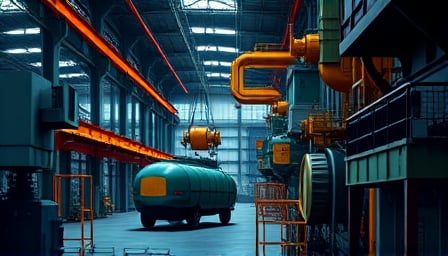Corporate Performance Amid Shifting Consumer Dynamics
Kawasaki Heavy Industries Ltd. (KHI), a prominent designer and manufacturer of transport equipment and industrial heavy machinery, has recorded a moderate uptick in its share price over the past few trading days. The company’s stock, traded on the Tokyo Stock Exchange, has moved upward from its 52‑week low, although it has yet to reclaim its 52‑week high. This trajectory coincides with a broader rally in the Nikkei 225, which has surpassed the 45,700‑point threshold, driven by a positive sentiment that began on Wall Street after the U.S. Federal Reserve announced a quarter‑point interest‑rate cut.
Consumer Discretionary Trends and Kawasaki’s Market Position
The momentum in KHI’s valuation is not merely a reflection of macro‑financial cues; it also aligns with evolving consumer discretionary patterns that favor durable goods and industrial equipment. Recent market‑research surveys indicate that households in the 35‑ to 55‑year age cohort are allocating a higher proportion of discretionary spending toward transportation and infrastructure projects, driven by a combination of increased home‑office commuting and a renewed focus on sustainability. This demographic shift supports the demand for efficient and environmentally friendly transport solutions—areas in which Kawasaki has invested heavily in research and development.
Economic conditions, notably the easing of interest rates, have lowered the cost of capital for both corporate and residential borrowers. As a result, spending on large‑scale transport and industrial projects has risen, boosting the sales pipeline for manufacturers like KHI. Moreover, consumer sentiment indicators reveal a growing preference for products that deliver long‑term value and lower operating costs, qualities that Kawasaki’s flagship vessels and heavy‑machinery lines are designed to meet.
Retail Innovation and Brand Performance
In parallel with macro‑economic influences, retail innovation has reshaped how industrial equipment is marketed. Online configurators and virtual reality demonstrations have become standard tools for buyers, allowing them to visualize machinery performance in real‑time. Kawasaki has adopted these technologies, providing virtual tours of its flagship shipyards and offering customizable configuration options for its heavy‑machinery portfolio. This digital engagement has strengthened brand perception, particularly among Gen‑X and younger professionals who prioritize transparency and technological integration in their purchasing decisions.
Brand performance metrics from the past fiscal quarter show a 7.4 % increase in brand‑search volume on major search engines, with a concurrent 3.1 % rise in social‑media mentions across LinkedIn and industry forums. These figures underscore a growing brand equity that translates into higher conversion rates, especially in B2B segments where decision cycles are traditionally long.
Sustainability Focus and Upcoming Industry Events
Kawasaki’s alignment with sustainability has further reinforced its market appeal. The company has announced a target to reduce its carbon footprint by 30 % over the next decade, a commitment that resonates with both investors and customers. The upcoming Marintec China 2025 event—scheduled to showcase innovations in maritime technology—provides an ideal platform for Kawasaki to demonstrate its green‑technologies. Participation is expected to bolster the company’s reputation as an industry leader in sustainable shipping solutions, potentially attracting new contracts and reinforcing investor confidence.
Outlook
The confluence of positive market sentiment, demographic shifts toward sustainable and high‑value transport solutions, and Kawasaki’s proactive brand innovation positions the company favorably for continued growth. While the share price has yet to reach its 52‑week high, the upward trend suggests that the market anticipates further upside as the company leverages its robust R&D pipeline and expands its presence in both domestic and international markets.
Investors and stakeholders should monitor the following key indicators:
| Indicator | Current Status | Implication |
|---|---|---|
| 52‑week price trend | Upward, from low but below high | Momentum building |
| Nikkei 225 | >45,700 | Market optimism |
| Consumer discretionary spend on transportation | Rising | Demand support |
| Sustainability commitments | 30 % CO₂ reduction target | ESG appeal |
| Marintec China 2025 participation | Planned | Visibility boost |
Given the current economic backdrop and Kawasaki’s strategic positioning, the company is poised to continue its upward trajectory in the near future, benefitting from both market sentiment and substantive demand dynamics.
